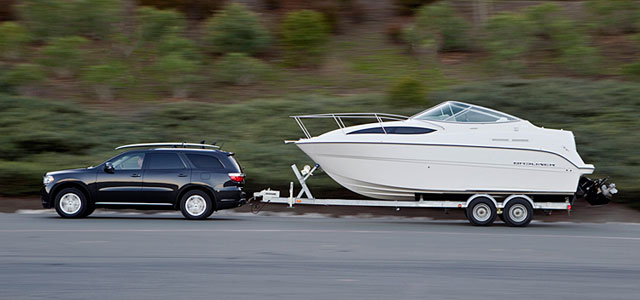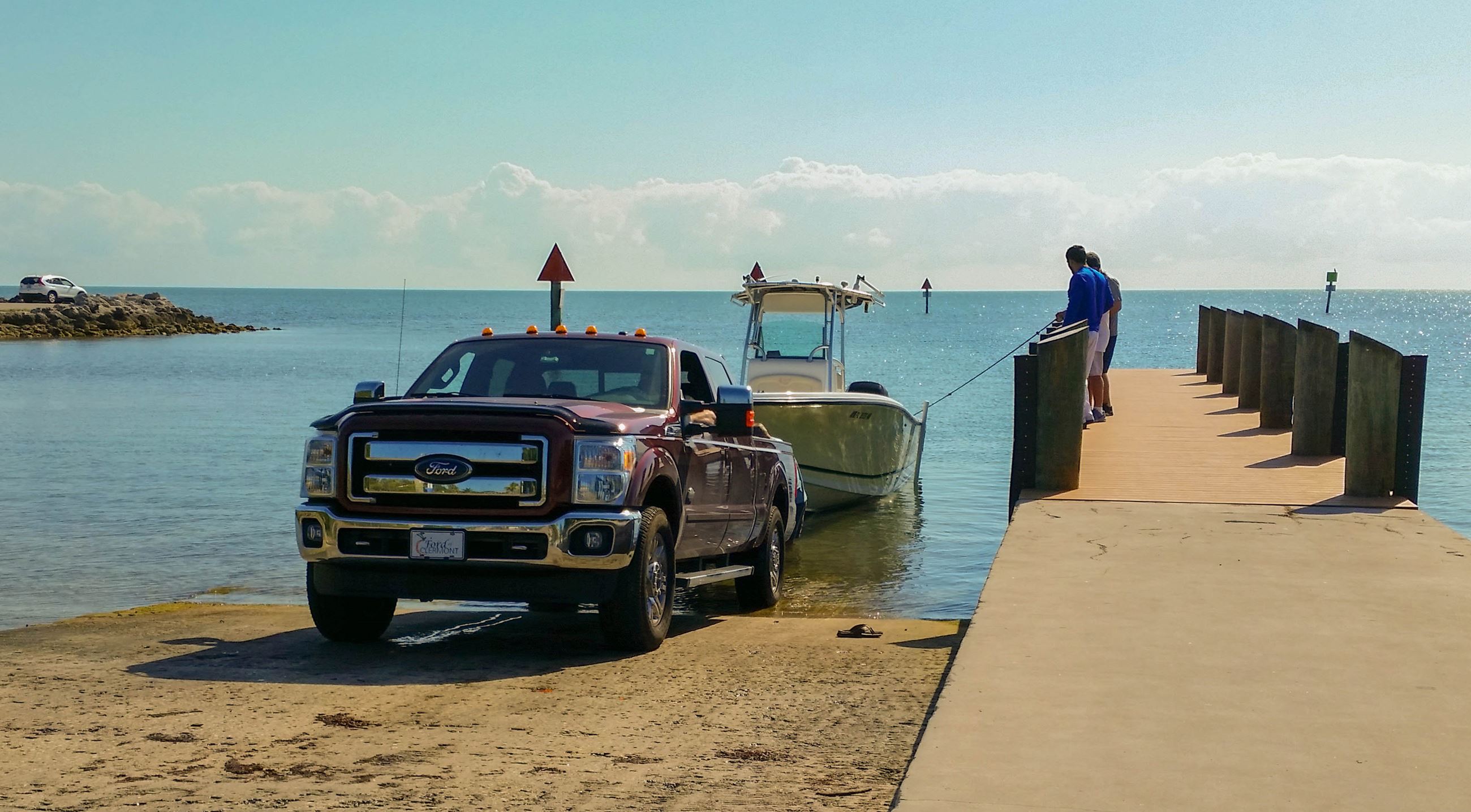Trionic Corporate Partners, LLC News
Tips for Trailering a Boat

Days on the water are a favorite with many boaters. While many may take advantage of their own boat lift or marina storage to keep their boat located on or near the water, a great many others haul their boat with a trailer to launch with each use. Whether you are a beginner at hauling a boat trailer or an old salt, there are several best practices that should be followed each time you hitch your trailer to a tow vehicle. Some of these are outlined below:
- Perform a trailer inspection prior to beginning the journey that includes:
- Check tire condition and inflation levels.
- Inspect trailer leaf springs and bunk boards.
- Ensure the winch strap is tight and locked and the safety chain is secured.
- Verify that additional security straps are secured properly in place.
- Tilt the outboard motor up to avoid contact with the roadway.
- Secure any items in the boat that may fly out during transport (e.g. coolers and lids, tubes, cushions, etc.).
- Ensure your vehicle is properly rated to pull the boat and trailer to be used.
- Connect your trailer to the hitch:
- Confirm the hitch ball is the proper size for the boat trailer.
- Attach tether used to activate electric brakes in case of emergency.
- Verify the ball seats properly into the trailer tongue.
- Secure the locking mechanism on the trailer hitch.
- Attach the security chains from the trailer to the vehicle in a crisscross configuration (left chain to right loop and right chain to left loop).
- Connect trailer lighting harness to the vehicle and verify proper lighting function (taillights, brake lights, turn signals, hazards).
- Verify lines of sight via rear view and side mirrors. Additions of fisheye mirrors or mirror extensions can increase visibility. Try to eliminate blind spots by adjusting mirrors.
- Remove wheel chocks that may be in place prior to departure.
- Test electric trailer brakes to ensure they are not locked.
- Ease the trailer into motion with your vehicle. Avoid rapid acceleration and build momentum gently and slowly.
- Leave adequate space between your vehicle and the vehicle in front of you. The required braking distance with a loaded boat trailer has been greatly increased.
- When turning corners, allow for extra clearance on the inside of the turn. Reduce speed and swing wide push deeper into new lane to avoid clipping the curb or dropping into ditches or culverts by cutting corners too sharply.
- Double-check available clearance when changing lanes. Be aware of your blind spots and the possibility that other impatient drivers may quickly pull into your target lane.
- If you detect any trailer sway, reduce speed, and pull over immediately. Adjust the load balance by redistributing weight if possible. Tongue weight should be 10-15 of the overall trailer weight.
- Boat ramps can be crowded and hectic. Before backing down a boat ramp, have a plan:
-
- Place boat keys in the boat.
- Properly place plugs into the boat drains.
- Have the boat fully loaded with all your gear to reduce the time needed between parking and returning to your boat and clearing the ramp for the next user.
- Ready mooring lines and secure a leash for the boat if you are launching solo.
- Remove security boat straps.
- Understand ramp conditions including wind and how slick the ramp is due to algae.
- Know where you plan to park your vehicle and trailer ahead of time
- When backing down a boat ramp, don’t panic. Expect the unexpected. Do not leave your vehicle without shifting into Park. Keep your vehicle running during the unloading process.
- As mentioned before, boat ramps are often very slippery. Navigate on foot with caution.
- When preparing to put your boat back on the trailer, be sure to position your trailer straight back down the ramp.
- Ensure the boat is properly positioned on the trailer, trim the motor up, and ensure the strap on the winch is tight and properly secured to the boat, as well as the safety chain.
- Be prepared for the load of the boat and trailer as you shift your vehicle back into gear. Gently accelerate to pull up the boat ramp with the boat in tow.
- If you can’t get proper traction on a slippery ramp, you can solicit a tow from another vehicle. Connect a tow strap in line from the rear of the additional vehicle and attach it to the front of your vehicle. Having a tow strap with you can really help save the day.
- Before leaving the boat ramp area, remove the boat plugs to drain any water in the bilge to reduce tow weight, replace straps to secure the boat to the trailer, and inspect the boat and motor to ensure no invasive species may be transported to your next destination.
- Secure all items in the boat that may blow out during transport.
Be safe, be courteous to your fellow boaters, and maintain your composure. Boat ramp videos are popular on social media for a reason. If you are not comfortable or confident towing a trailer, consider practicing in an empty parking lot, as practice makes perfect. Preparation and caution can be your greatest allies in making your boating trips a pleasure.

Trionic Corp Products
Trionic Corp manufactures a wide range of marine and RV products. For marinas and docks, dock boxes, dock carts, dock boarding steps, trash cans, buoys, channel markers, and barriers floats are offered. Trionic also offers spill kits, spill containment boom, sorbents, and solar lighting. or boats and RVs, Trionic Corp has over 70 different sized water tanks and holding tanks, shower sump tanks, premium holding tanks, tank hose fittings, tank level monitors, vent filters, and tank pump out tubes. Trionic Corp's quality and service set us apart from the competition. Our products are built for Marina Life!
Mailing Address:
P.O. Box 324
Port Washington,
WI 53074
Physical Address:
222 E. Main St. Suite 208
Port Washington,
WI 53074


